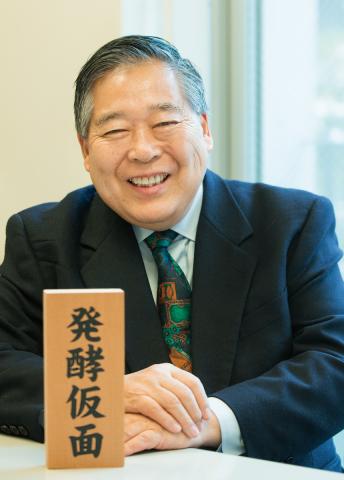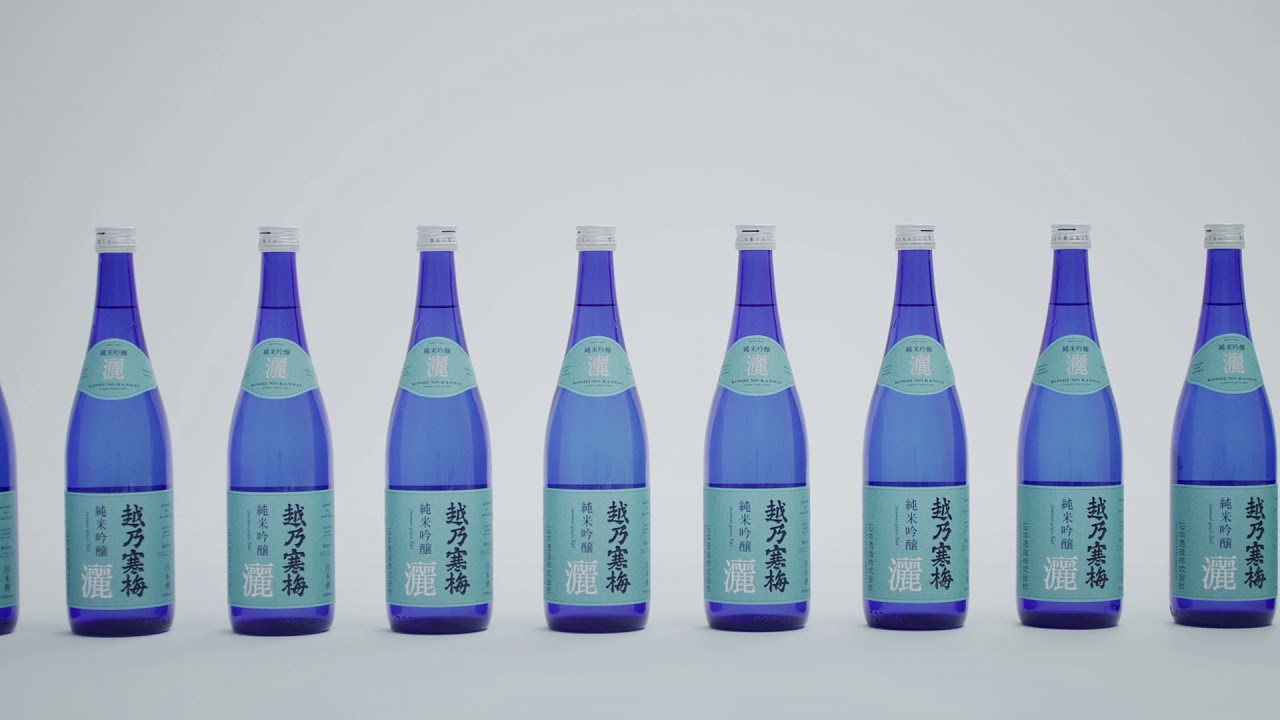
*To watch the video in full screen, please click play and then the YouTube icon on the lower right-hand corner.
For millennia, the process of fermentation has helped shape human civilization – from preserving food products through long winters, to creating libations like beer and wine. In Japan, it’s played a special role in shaping not only individual food products, but the entire flavor profile of Japanese cuisine through key fermented ingredients like miso, soy sauce, mirin, and sake that are common in everyday cooking. Today, as scientific studies increasingly show the wide-ranging health benefits of fermentation, the buzzword is popping up in more global products from foods to beverages and even cosmetics. This summer, JAPAN HOUSE Los Angeles spotlights the diversity of fermentation. The short film featured above was made in partnership with fermentation experts Takeo Koizumi and Makoto Kanauchi to introduce the world of fermentation and its special cultural, culinary, and nutritional role in Japan. Read on to discover more about three areas where the phenomenon of “microbial cultures” are having a major impact on culture – and where Japanese fermentation traditions are giving new inspiration to the world.
Food
Many places in the world are known for distinctive fermented healthy foods – from Korean kimchi to French blue cheese. In Japan, fermentation is not only used to produce iconic dishes, but can be found in the very building blocks of Japanese cuisine. For that, we have to thank a special type of catalyst found only in Japan – koji mold, a living microorganism that helps break down other materials in the process of fermentation. Known as the “national fungus,” koji mold (Aspergillus oryzae) feeds on grains, often rice (partially or fully cooked), barley, or soybeans, key ingredients in Japanese foods. “Rice koji” is added to soybean paste to create miso, or to shochu (distilled hard liquor) to create mirin (a rice wine widely used in cooking), or to soy to create soy sauce. These essential ingredients influence the unique flavors of all the Japanese foods where they are used. Of course, there are also fermented dishes that are stand-alone staples like tsukemono (pickled vegetables), or natto, the sticky, protein-rich fermented soybeans that are common in traditional Japanese breakfasts and gaining more worldwide fans. All of these fermented foods are known for their healthy probiotic qualities, which help protect against harmful bacteria by promoting “good” gut flora, as well as aiding with digestion.
To learn more about fermentation as the foundation of Japanese cuisine, dive into the Japanese Food Lab | Chirashi Sushi with Chef Shinji Ishida and Giada De Laurentiis as your guides.
Beverage
The global history of fermentation starts with alcoholic beverages, such as the traces of an ancient beer found in Israel that dates back over 13,000 years. In Japan, the alcoholic drink called nihonshu (which is what Westerners know as sake – although the word sake is used in Japan to refer to any alcoholic beverage) dates back to at least the Nara period (710 – 794) and is created by fermenting rice with the catalyst of koji mold. The process not only creates food for the yeast that helps brew the rice wine, but it also contributes to the unique flavors of different types of sake.
Other traditional liquors like shochu have a wider variety of sources ranging from rice to barley to sweet potato, and a variety of processing techniques.
There are also low- or non-alcoholic fermented beverages in Japan such as amazake. Like sake, amazake is also produced with rice, rice koji, and water, but with only trace amounts of alcohol. It’s sweet, with a grainy texture similar to rice porridge, and can be consumed hot or cold. Lately, there’s been a revival of interest in home-fermenting throughout Japan, leading to an upswing in popularity for amazake brewed at home. Like the kombucha trend in the West, amazake is known for its health benefits as a probiotic, and as an unofficial “hangover cure.” There are also the prized and regionally specific types of “post-fermented tea” (called kōhakkōcha). Unlike typical tea processing which involves drying and curing, this extra step introduces a microbe (like fungus or bacteria) to kick off fermentation and add an extra dimension of rich flavor and aroma.
To learn about sake, or more accurately “nihonshu,” as a classic fermented beverage, read an article about the special ways it is made, served, and enjoyed. Also, learn about upcoming sake tasting programs through our newsletters.
Beauty
Speaking of sake, geisha in Japan once used sake as a facial serum, based on the anecdotal belief that the hands of sake brewers in Japan remain remarkably smooth and ageless. In more recent times, cosmetics companies have invested heavily in researching the anti-aging and beautifying properties of fermentation techniques. The well-known Japanese beauty brand SK-II led the way in the 1980s, developing an ingredient called pitera, a type of fermented yeast associated with sake production for use in their skin products. Today, many global beauty brands are following suit, including fermented ingredients and processes in their cosmetics to offer the same probiotic benefits to the skin that eating fermented foods does for the stomach and body. As the skin itself is a microbiome, these fermented ingredients boost the “good” bacteria on the skin surface, as well as antioxidants, amino acids, and other rejuvenating elements. Fermentation also helps break down natural ingredients into smaller pieces, so that they can be more easily absorbed and create a barrier for the skin. Unsurprisingly, fermentation-based beauty products have a longer shelf-life due to the naturally preserved contents, making them more sustainable for the beauty industry too.
Content Supervision of Fermentation Video

Photo by Hirohito Nakanishi
Takeo Koizumi, PhD
Dr. Takeo Koizumi is professor emeritus at Tokyo University of Agriculture in Japan and holds a doctorate degree in Agriculture, with a specialty in food culture, fermentation, and brewing sciences. Concurrently, he is a visiting professor at several universities including Kagoshima University, Fukushima University, Beppu University, Ishikawa Prefectural University, among others.
Dr. Koizumi also serves as a president of a fermentation school with programs focused on developing fermented food sommeliers.
In addition to his involvement with educational institutions, he is the director of a registered non-profit organization, Fermentation-culture Promotion Agency, and also serves as a food-related advisor for many national and local governmental groups.
As an active ambassador in promoting Japan’s fermentation culture, he has written more than one hundred books related to food.
Dr. Koizumi was born in a sake brewer family in Fukushima Prefecture, Japan, in 1943.

Makoto Kanauchi, PhD
Dr. Makoto Kanauchi is a Professor in Department of Food Management at Miyagi University. He has been in Department of Food Management, Miyagi University since April 2005. He was employed at the Institute of Food Science in Fuji Oil Corporation in Moriya, Ibaraki, Japan as a Researcher (2003 Aug. - 2005 Mar.).
He worked in Prof. Charlie Bamforth’s Laboratory in Food Science and Technology, University of California at Davis, California (Nov. 1999 - May 2003). In March 1999, he received a Ph.D. in Bio-regulation from Tokyo University of Agriculture. Major publications include Lactic Acid Bacteria: Methods and Protocols, Humana Press. 2019, and Brewing Technology, IntechOpen. 2017, etc.
Learn More on Fermentation
SAKE 'Nihonshu' |
Rice, Water, and the Preparation Process

The making of nihonshu involves a so-called multiple and parallel fermentation process where steamed rice added with a particular mold (called koji) is first converted into sugar, and then that sugar is converted to alcohol by yeast known as kobo.
A Cup of Innovation |
The Continuing Journey of Japanese Tea

The diversity of flavor and appearance of green, oolong, and black is caused by the tea’s preparation process, and whether the tea is allowed to dry “naturally” in open air after plucking (causing “fermentation”), or if fermentation is halted through the application of heat.
Dress Up Your Dinner with Miso Dressing

JAPAN HOUSE Los Angeles is continuing its popular Japanese Food Lab program online with a new series by Los Angeles-based chef Kuniko Yagi introducing easy, adaptable ways to bring a Japanese twist to a typical meal: Japanese dressings and sauces! Try making the Miso Dressing, made of fermented soybeans.

